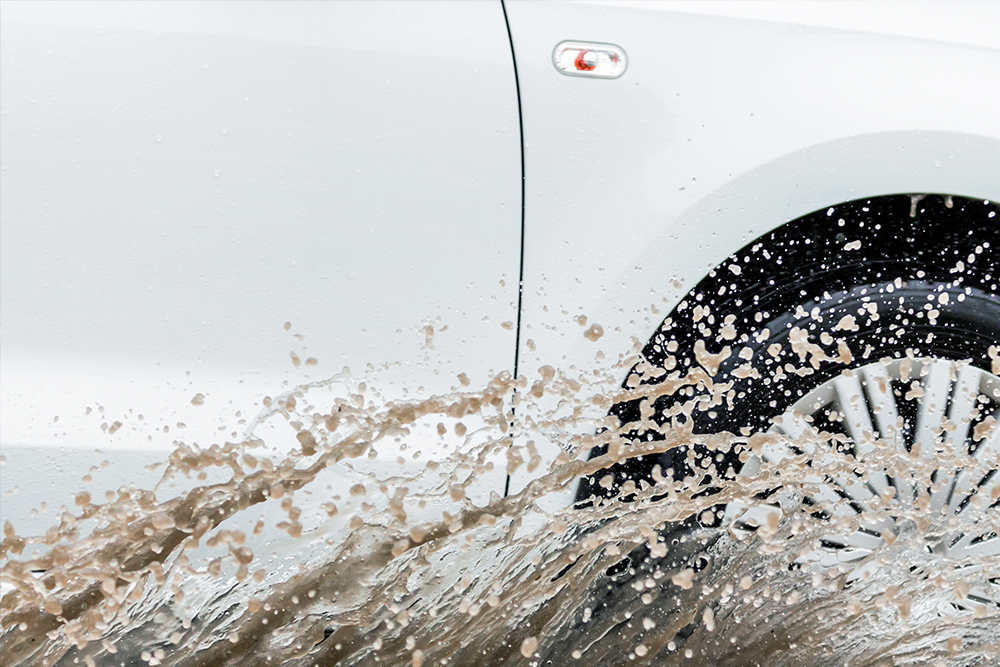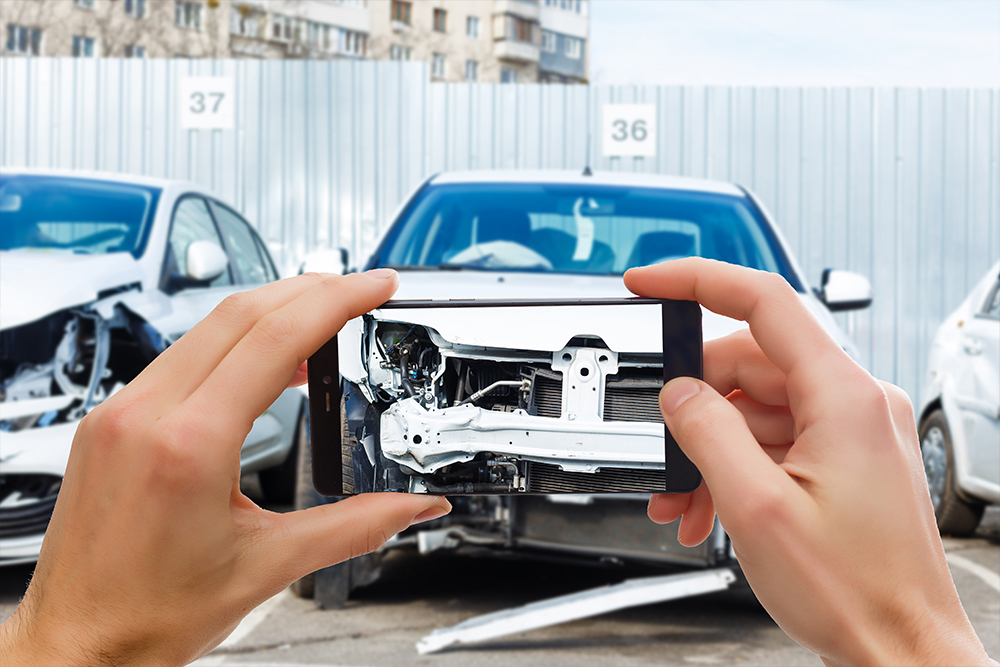In the ever-evolving world of the automotive industry, a fascinating trend is taking hold – the revival of repairable autos. Once considered mere salvage, these vehicles are now being transformed into roadworthy machines, breathing new life into the market. With advancements in technology and the growing demand for affordable options, repairable autos have become a game-changer for both consumers and the industry as a whole.
From minor cosmetic fixes to major mechanical repairs, these once-discarded vehicles are being meticulously restored, offering a cost-effective alternative to brand-new cars. But the transformation goes beyond just saving money; it’s about embracing sustainability and reducing waste. As we delve into the world of repairable autos, we’ll explore the impact they’re having on the automotive industry, the challenges faced by those involved, and the exciting possibilities they bring for consumers seeking quality vehicles without breaking the bank. So buckle up and join us on this thrilling journey from salvage to roadworthy, where innovation and ingenuity are paving the way for a greener and more affordable future.
The rise of salvage vehicles and their potential for restoration
The concept of salvage vehicles has been around for decades, but it’s in recent years that their potential for restoration has gained significant attention. Salvage vehicles are those that have been damaged in accidents, floods, or other incidents, rendering them unfit for regular use. Traditionally, these vehicles would have been deemed beyond repair and sent to junkyards or scrap yards. However, with advancements in automotive technology and a shift towards sustainable practices, salvage vehicles are now seen as an opportunity rather than a lost cause.
Restoring salvage vehicles has become a viable option for both individuals and businesses alike. For consumers, it offers a chance to own a quality vehicle at a fraction of the cost of a new one. The cost savings can be substantial, especially when it comes to luxury or high-end vehicles that would otherwise be out of reach for many buyers. Additionally, repairing salvage vehicles allows consumers to customize and personalize their cars to their liking, something that may not be possible with a brand-new vehicle due to budget constraints.
From an industry standpoint, salvage vehicles represent a new market segment with considerable potential. By reviving these vehicles, manufacturers and dealerships can tap into a previously untapped customer base. This not only expands their customer reach but also allows them to offer more affordable options to consumers who may not have considered purchasing a new car. It’s a win-win situation for both parties involved.
Benefits of repairing salvage vehicles for consumers and the industry
The benefits of repairing salvage vehicles extend beyond cost savings. For consumers, one of the biggest advantages is the ability to own a higher-end or more luxurious vehicle that may have been otherwise unaffordable. This is particularly appealing to car enthusiasts or individuals who appreciate the finer things in life but don’t want to break the bank. Repairing salvage vehicles also allows consumers to avoid the significant depreciation that occurs with new cars. As soon as a new car is driven off the lot, its value depreciates rapidly. With a repaired salvage vehicle, the initial hit to value has already occurred, making it a better long-term investment.
From an industry perspective, repairing salvage vehicles helps reduce waste and promotes sustainability. The automotive industry is one of the largest contributors to pollution and waste, and finding ways to minimize its environmental impact is crucial. By restoring salvage vehicles, the industry can repurpose existing materials and reduce the need for new production. This not only reduces carbon emissions but also conserves natural resources. Additionally, the repair and restoration process often generates employment opportunities, benefiting local economies.
The process of restoring salvage vehicles to roadworthy condition
Restoring salvage vehicles to roadworthy condition is no easy task. It requires a combination of expertise, skill, and attention to detail. The first step in the restoration process is a thorough inspection of the vehicle to assess the extent of the damage. This includes examining the bodywork, engine, suspension, and other critical components. Once the assessment is complete, a detailed repair plan is developed, outlining the necessary repairs and replacements.
The repair process can vary significantly depending on the type and severity of the damage. For minor cosmetic fixes, such as dents or scratches, the repairs may involve paintwork, panel replacement, or polishing. In cases where there is more significant damage, such as structural issues or mechanical failures, the repairs may require more extensive work, including welding, frame straightening, or engine rebuilds.
To ensure the vehicle meets roadworthy standards, it undergoes a series of tests and inspections. This includes checking for proper alignment, functioning brakes, and a working electrical system, among other things. Once the repairs and inspections are complete, the salvage vehicle is ready to hit the road once again, fully restored and roadworthy.
Regulations and guidelines for repairing salvage vehicles
Repairing salvage vehicles is not without its challenges. There are specific regulations and guidelines that must be adhered to ensure safety and legality. These regulations vary from country to country and even state to state, making it essential for those involved in the restoration process to stay informed and up to date.
In most cases, salvage vehicles must undergo a thorough inspection before they can be deemed roadworthy. This inspection is typically conducted by a certified mechanic or a government-appointed authority. The inspection ensures that the repairs have been done correctly and that the vehicle meets all safety and emissions standards. If the vehicle passes the inspection, it is issued a rebuilt title or a similar designation, indicating that it has been repaired and is fit for use.
It’s important to note that not all salvage vehicles can be repaired. Some may have suffered irreparable damage or may not be cost-effective to restore. In such cases, the salvage vehicle may be dismantled for parts or sent for recycling, ensuring that even in its end-of-life state, it still serves a purpose.
The role of technology in the resurgence of repairable autos
Technology has played a significant role in the resurgence of repairable autos. Advancements in automotive engineering, diagnostic tools, and repair techniques have made it easier and more cost-effective to restore salvage vehicles. Computer-aided design (CAD) software allows technicians to accurately assess and plan repairs, reducing guesswork and improving efficiency. Additionally, the availability of affordable aftermarket parts and components has made it easier to source the necessary materials for repairs.
The use of technology goes beyond just the repair process. Online marketplaces and platforms have emerged, connecting buyers and sellers of salvage vehicles. These platforms provide a convenient way for individuals and businesses to find and purchase salvage vehicles for restoration. They also offer valuable resources and information, helping buyers make informed decisions and connect with professionals in the industry.
As technology continues to advance, we can expect further innovations in the repairable autos space. From self-driving capabilities to advanced safety features, salvage vehicles of the future may come equipped with the latest technologies, offering consumers a truly unique and cost-effective driving experience.
Success stories of salvage vehicle restorations
While the restoration of salvage vehicles may seem like a daunting task, there have been numerous success stories that demonstrate the potential and rewards of this endeavor. One such success story is the transformation of a severely damaged luxury car into a show-worthy vehicle. Through meticulous repairs, skilled craftsmanship, and attention to detail, what was once a salvage vehicle became a sought-after collector’s item.
Another success story involves the restoration of classic cars. Salvage vehicles from bygone eras are often in disrepair, with rust, decay, and missing parts. However, with the right knowledge and expertise, these vehicles can be brought back to their former glory. Restoring classic cars not only preserves automotive history but also allows enthusiasts to enjoy these timeless machines for years to come.
These success stories highlight the passion and dedication of those involved in the restoration process. It’s not just about fixing a damaged vehicle; it’s about breathing new life into something that was once considered beyond repair.
Challenges and considerations of working with repairable autos
Working with repairable autos comes with its fair share of challenges and considerations. One of the primary challenges is accurately assessing the extent of the damage and determining the feasibility of repairs. Some salvage vehicles may have hidden issues that only become apparent during the restoration process, leading to unexpected delays and costs.
Sourcing the necessary parts and components can also be a challenge, particularly for older or rare vehicles. While aftermarket parts are readily available for many popular models, finding original or compatible parts for more obscure vehicles can be a daunting task. This often requires extensive research and networking within the automotive community to locate the necessary resources.
Another consideration is the potential for fraudulent activity. Unfortunately, there are individuals who may attempt to sell salvage vehicles that have not been properly repaired or were involved in illegal activities. This underscores the importance of conducting thorough inspections and verifying the vehicle’s history before making a purchase.
Finally, working with repairable autos requires a certain level of expertise and skill. It’s not a task that can be taken lightly or approached without the necessary knowledge. From bodywork to mechanical repairs, each aspect of the restoration process requires careful attention and precision. It’s crucial to have qualified professionals who understand the intricacies of repairable autos to ensure a successful restoration.
The future of the automotive industry and the role of repairable autos
As we look to the future of the automotive industry, repairable autos are poised to play a significant role. With the growing emphasis on sustainability and cost-effectiveness, the demand for repairable autos is expected to increase. This presents an opportunity for manufacturers and dealerships to expand their offerings and cater to a broader range of consumers.
The rise of electric vehicles (EVs) also presents exciting possibilities for repairable autos. As EVs become more prevalent, salvage electric vehicles may become a valuable source of components for repairs and upgrades. This not only helps reduce waste but also supports the transition to a greener transportation system.
Additionally, advancements in autonomous driving technology may lead to an increase in salvage vehicles equipped with self-driving capabilities. As self-driving technology becomes more accessible and affordable, salvage vehicles could be retrofitted with these features, offering consumers an affordable entry point into the world of autonomous driving.
In conclusion, repairable autos are revolutionizing the automotive industry. From salvage to roadworthy, these once-discarded vehicles are being meticulously restored, offering a cost-effective alternative to brand-new cars. The benefits of repairing salvage vehicles are manifold, from cost savings to sustainability. While working with repairable autos presents its challenges, the rewards are well worth the effort. As we look to the future, repairable autos are set to play a vital role in shaping a greener, more affordable, and more innovative automotive industry. So, buckle up and embrace the possibilities of the salvage-to-roadworthy journey!









